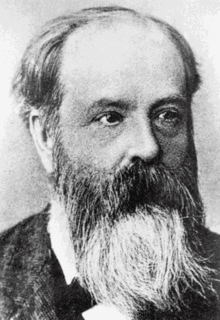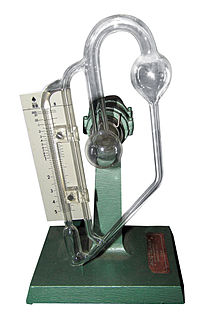
Johannes Nicolaus Brønsted was a Danish physical chemist, who developed the Brønsted–Lowry acid–base theory simultaneously with and independently of Martin Lowry.

Prof Frederick Guthrie FRS FRSE was a British physicist and chemist and academic author.

Sir Walter Norman Haworth FRS was a British chemist best known for his groundbreaking work on ascorbic acid while working at the University of Birmingham. He received the 1937 Nobel Prize in Chemistry "for his investigations on carbohydrates and vitamin C". The prize was shared with Swiss chemist Paul Karrer for his work on other vitamins.

Edmund ("Ted") John Bowen FRS was a British physical chemist.

George Porter, Baron Porter of Luddenham was a British chemist. He was awarded the Nobel Prize in Chemistry in 1967.

Frederick Sydney Dainton, Baron Dainton, Kt, FRS, FRSE was a British academic chemist and university administrator.

Batley Grammar School is a co-educational free school in Batley, West Yorkshire, England.

Isabella Helen Mary Muir CBE FRS was a British biochemist. She is best known for pioneering work into the causes of osteoarthritis.

The Department of Physics and Astronomy at the University of Manchester is one of the largest and most active physics departments in the UK, taking around 250 new undergraduates and 50 postgraduates each year, and employing more than 80 members of academic staff and over 100 research fellows and associates. The department is based on two sites: the Schuster Laboratory on Brunswick Street and the Jodrell Bank Centre for Astrophysics in Cheshire, international headquarters of the Square Kilometre Array (SKA).
Arthur George Perkin DSc FRS FRSE (1861–1937) was an English chemist and Professor of Colour Chemistry and Dyeing at the University of Leeds.

Herbert McLeod, FRS was a British chemist, noted for the invention of the McLeod gauge and for the invention of a sunshine recorder.
Sir Eric Keightley Rideal, was an English physical chemist. He worked on a wide range of subjects, including electrochemistry, chemical kinetics, catalysis, electrophoresis, colloids and surface chemistry. He is best known for the Eley–Rideal mechanism, which he proposed in 1938 with Daniel D. Eley. He is also known for the textbook that he authored, An Introduction to Surface Chemistry (1926), and was awarded honours for the research he carried out during both World Wars and for his services to chemistry.
Graham Dixon-Lewis, MA, DPhil, FRS was a British combustion engineer.

Vera Yevstafievna Popova, née Vera Bogdanovskaya was a Russian chemist. She was one of the first female chemists in Russia, and the first Russian female author of a chemistry textbook. She "probably became the first woman to die in the cause of chemistry" as a result of an explosion in her laboratory.
Sir Wyndham Rowland Dunstan (1861-1949), was professor of chemistry and Director of the Imperial Institute in London.

The Department of Chemistry at the University of Manchester is one of the largest Departments of Chemistry in the United Kingdom, with over 600 undergraduate and more than 200 postgraduate research students.
Sadhan Basu FNA, FASc, FRSC was an Indian physical chemist, academic and the Palit Professor of Chemistry at the University of Calcutta from 1964 to 1985. He was known for his elucidation of the Quantum Mechanical Model of Robert S. Mulliken and his article, Degree of Polymerization and Chain Transfer in Methyl Methacrylate, co-authored by Jyotirindra Nath Sen and Santi R. Palit was the first published Indian article on polymer chemistry. He was an elected fellow of the Royal Society of Chemistry, Chemical Society of France, Indian Chemical Society, Indian National Science Academy and the Indian Academy of Sciences. The Council of Scientific and Industrial Research, the apex agency of the Government of India for scientific research, awarded him the Shanti Swarup Bhatnagar Prize for Science and Technology, one of the highest Indian science awards, in 1962, for his contributions to chemical sciences.
George Gerald Henderson was a chemist and professor at the University of Glasgow. He was known for his work on terpenes.

Max Born was a widely influential German physicist and mathematician who was awarded the 1954 Nobel Prize in Physics for his pivotal role in the development of quantum mechanics. Born won the prize primarily for his contributions to the statistical interpretation of the wave function, though he is known for his work in several areas of quantum mechanics as well as solid-state physics, optics, and special relativity. Born's entry in the Biographical Memoirs of Fellows of the Royal Society included thirty books and 330 papers.
This page is based on this
Wikipedia article Text is available under the
CC BY-SA 4.0 license; additional terms may apply.
Images, videos and audio are available under their respective licenses.












